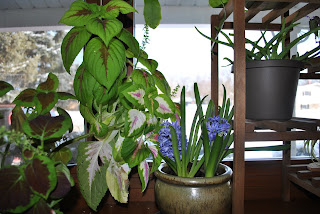
When I think of one of the "Complete Idiot's Guide to Something" books, I envision a manual on some quotidian task that really isn't that complicated but that someone mechanically challenged like me would need help with, i.e., "The Complete Idiot's Guide to Changing your Oil," or maybe "The Complete Idiot's Guide to Changing a Lightbulb." I was therefore taken aback when I received a copy of "The Complete Idiot's Guide to Year-Round Gardening" by Delilah Smittle and Sheri Ann Richerson, which seemed to me a topic too challenging for an "Idiot's Guide." After reading it, I learned I was wrong and right at the same time.
"The Complete Idiot's Guide to Year-Round Gardening" covers just about everything you need to know for vegetable gardening and a good deal of what you need for strictly ornamental gardening. Soil preparation, no-till methods, and building raised beds are addressed early, followed by seed starting, covers for outdoor gardens, and extensive chapters on greenhouses. Readers will learn the types of greenhouses available, how to establish and maintain one, and even how to create an entire thriving ecosystem within one. Tidbits on garden design concepts, bulb forcing, and grow lights for indoor gardening are peppered throughout the text.
This vast amount of information is clearly presented in a casual, readable tone. It's also well-organized and includes call-outs of key tips and ideas. If you want to garden all year, regardless of your location, this book will explain exactly how to go about doing it.
This book contains many beginner, even idiot-proof, instructions on topics such as starting seeds, making compost, and maintaining healthy soil. But much of the information is not for neophytes who would consider themselves gardening "idiots" and thus consult this book. Rather, the instructions for various row covers and greenhouses are really geared towards experienced gardeners looking to extend the growing season. Even for these folks, some of the ideas are a little complicated. For example, the authors suggest making a special galvanized-pipe implement to measure the distance between seeds when directly sowing them in the garden. Why not just use a tape measure or ruler? They go into great detail on how to build a root cellar, which strikes me as pretty major construction. And I learned that I do garden nearly year-round (by their standards) without even realizing it! If I, as an intermediate gardener at the very least, am intimidated, what would a newbie think?
In short, this book should be renamed "The Guide to Year-Round Gardening" and experienced gardeners should read it for all the exciting ideas and encouragement about how to prolong the gardening experience. Newcomers to gardening should stick to The Vegetable Gardener's Bible or a similar intro-to-edibles book to avoid feeling overwhelmed.
I received a free copy of this book from Penguin Group USA. The opinions are solely my own.












